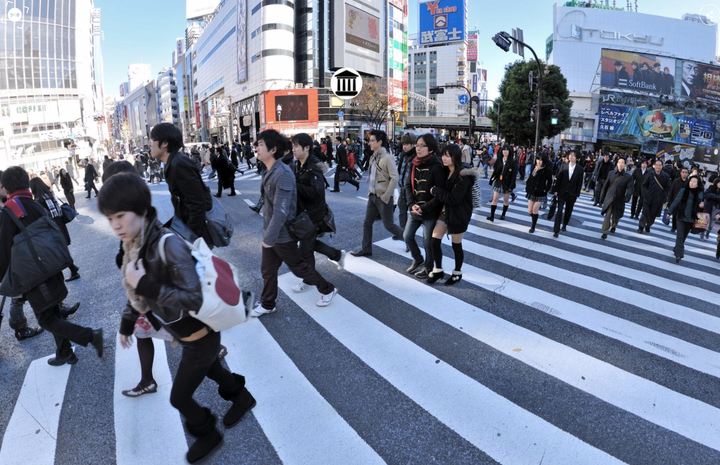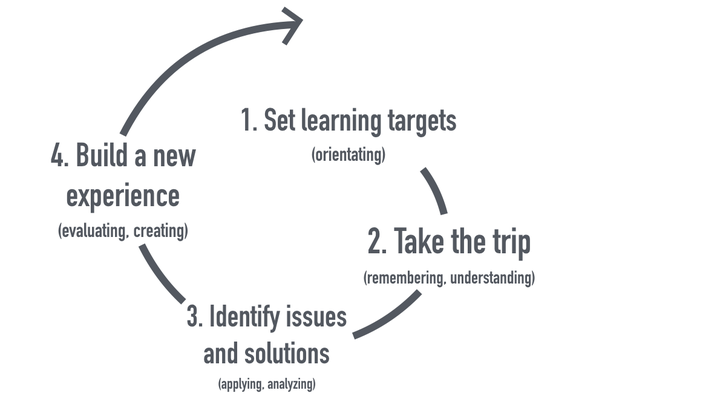
Shortly after the Women’s March in January this year we conducted a survey among teachers to learn about how they integrate topics such as global women’s rights in their teaching. 90% of the respondents said their students are interested in questions related to gender equality, but 42% said this topic is not covered in their curriculum. When at the same time political discourse on most topics in the USA is negative and highly polarized, we concluded: when media goes low, teachers must go high.
Inspired by the work of immersive journalists such as Nonny de la Peña from the Emblematic Group, our education team put together a virtual field trip exploring women’s rights in 12 countries. The field trip consists of a set of remixable interactive 360 images that let the viewer imagine they are standing (as a woman) in a street corner or a marketplace in Ireland, Finland, India, Australia, Yemen, China, Russia, Israel, Japan, UK, Iran, and USA. Each story contains embedded audio clips about legal rights, education, health care, and women’s economic and political participation in each specific country.
Our main goal with this project was to demonstrate that virtual field trips are particularly suitable for learning about complex global issues such as human rights, gender equality, climate change, population growth and food production. This is because it has the power to transform abstract global concepts into observable practical settings in various locations. Even if the student’s view is anchored at the center of the 360 image or video, an immersive experience can transform abstract concepts into observable, comparable situations in multiple locations, and this way stimulate engagement and learning as efficiently as a physical field trip. This is especially true if the lesson is part of a framework that connects to the curriculum.
Harnessing VR as a tool
As exciting as it is to be standing on a ledge atop a huge skyscraper, meet with a T-Rex, and realize how immersive media will fundamentally change entertainment, media, and education, it’s good to remember that even the most stunning VR experience as such does not qualify as a learning goal. The goal of VR in the classroom is to support the development of higher order thinking skills (HOTS) that in education are best applied to solving real-world issues. Without a framework, students will just zip around in a 360 environment not knowing what they are supposed to learn, which is a waste of everybody’s time and money. Professional development for integrating VR in education is thus as important as the technology itself.
Susan Oxnevad, who continuously inspires our education community with ideas how to best utilize virtual reality in the classroom, has proposed the following framework for a lesson plan that can be modified to meet specific learning goals:
1. SET LEARNING TARGETS. Introduce questions you want students to think about during the experience. For example in this story about global women’s rights:
- Outline the cornerstones of women’s rights and explain how do advancements (or steps back) in one area affect the others.
- Identify the key conditions for women’s equal participation in the economy
- Explain what kind of health care and child care arrangements best support women’s education and employment. Discuss how does access to contraception impact the women’s level of education and participation in work life.
- Compare the actions of the government to support women’s rights in your country with another country that you know.
2. TAKE THE TRIP. Let students explore the virtual field trip materials at their own pace, at school or at home.
3. IDENTIFY ISSUES AND SOLUTIONS. Develop higher level thinking skills by providing students an opportunity to collaboratively develop solutions for issues they have identified during the field trip.
4. ACCOUNTABILITY: DEMONSTRATE LEARNING. Let students demonstrate their learning by editing or creating new virtual field trip materials that include their own observations and solutions.
In the spirit of the expansive learning theory, here is a simplified graph of how the framework connects with the Bloom’s Taxonomy of educational learning objectives aiming at redefining existing practices and models of thinking about real world topics - such as global women’s rights or climate change.

Lastly, a note on access and affordability: As long as the required hardware and content creation software for VR in schools average above $50 per student, it’s not obvious how the use of VR can scale in education. At the same time, we know both the headset and the 360 camera technology will improve and become more affordable in the next two years. When the consumption of educational VR experiences is aligned with defined learning goals, virtual field trips can efficiently support student’s development across subject areas and grade levels. And not only children, but adults too. After this virtual field trip exploring global women’s rights, my perspective on the interplay of health care, child care, education, and gender equality in society has changed forever.
